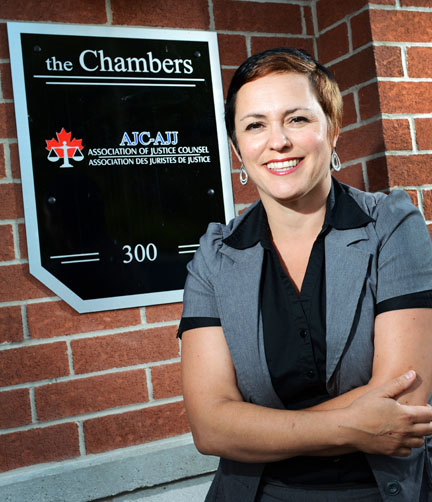A year after signing their first negotiated contract netting them a 12-per-cent pay hike for the current year, federal lawyers will be heading back to the negotiation table in the next few months as the Association of Justice Counsel filed its notice to bargain Jan. 9.

In 2012, the association, which represents about 2,700 federal lawyers, reached its first negotiated settlement. It will expire this May. President Lisa Blais says it took a long time for Treasury Board to implement the deal and members only received their increase payouts in July 2013.
“This 2012 deal is only the beginning for us. We had over 20 years of wage restraint so we stagnated — we went from the top of the list in terms of our provincial counterparts to third from the bottom over 20 years. Now this deal puts us behind Ontario and Alberta,” says Blais.
While some are arguing federal lawyers are going into their negotiations in a better position than their other federal colleagues, Blais argues there are similar issues at play.
“We’re working under difficult circumstances. They’re asking us to do more with less. They’re heaping on the legislation and responsibilities and more complex tools to work with such as the mandatory minimum sentence regimes and they’re taking away resources,” Blais tells Legal Feeds.
While they didn’t feel the reductions in staffing like other areas of the civil service have, a total of 49 positions for lawyers in the federal government have been eliminated.
Last year in the federal tax law section Treasury Board asked for 30 volunteers from a department of 300 to take buyouts. With attrition, only eight had to step up but the section still lost 30 positions. In British Columbia, 17 positions in the regulatory law section were eliminated. There is also a major review underway of the civil litigation branch at the Department of Justice.
“This is a government that touts law and order and getting tough on tax cheats and here we are with 30 fewer positions,” she says. “We have seen contracting out in the past and while I don’t begrudge government for being fiscally responsible, they’re going to have to make some hard choices. Are they going to serve Canadians appropriately and fund the law-and-order agenda? Then do so. We’re not making widgets — we write legislation, we prosecute drug deals and terrorists, and protect the environment.”
Roughly 80 per cent of the union’s membership is within the Department of Justice, 15 per cent are with Public Prosecution Services Canada, and the balance are embedded in different tribunals or agencies such as Veterans Affairs. It does not include lawyers with the Judge Advocate General.
Salaries for federal lawyers range from $70,000 to an average over $100,000. The highest-level lawyer in the federal government could make $220,000 but Blais says no one currently earns that much.
“I don’t believe that creature even exists,” says Blais. “We have two pay grids — one for Toronto and then for lawyers outside Toronto.”
Performance reviews for federal lawyers occur twice a year for junior lawyers and once a year for other counsel. If they meet expectations they receive 4.7 per cent or 7 per cent if they exceed expectations. Those at the top of the grid get a lump sum payout. About 60 per cent are at that level.
Recruitment for government legal jobs isn’t difficult, says Blais, but retention is tough.
“That was the impetus for the agreement in 2012. We understand on paper this looks very attractive but there’s context to why Treasury Board finally saw the light. We were seeing mass exodus in some of our larger centres. The whole reason for the Toronto differential being imposed in the 1990s was to avoid the exodus occurring when Ontario lawyers received a healthy pay raise,” says Blais.

 In 2012, the association, which represents about 2,700 federal lawyers, reached its first negotiated settlement. It will expire this May. President Lisa Blais says it took a long time for Treasury Board to implement the deal and members only received their increase payouts in July 2013.
In 2012, the association, which represents about 2,700 federal lawyers, reached its first negotiated settlement. It will expire this May. President Lisa Blais says it took a long time for Treasury Board to implement the deal and members only received their increase payouts in July 2013.